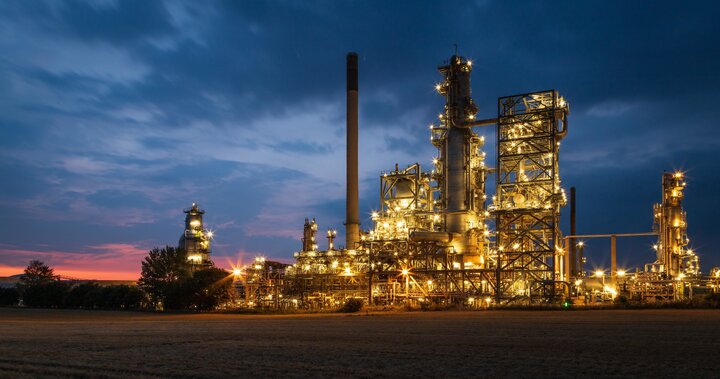Nestled amongst vast oil reserves, Iran holds another valuable treasure: a burgeoning petrochemical industry. Ranking fourth in the Middle East and 14th globally, it’s a powerhouse, contributing significantly to both the nation’s economy and its ambitions on the international stage. This industry, while brimming with potential, navigates a complex path amidst global competition, domestic challenges, and the ever-shifting sands of geopolitics.
Growth with Ambition:
Fueled by abundant feedstock and a strategic ten-year plan, Iran’s petrochemical industry is expanding rapidly. Exports saw a robust 6% increase in 2023, reaching 27.6 million metric tons. This translates to impressive revenue, with petrochemicals now boasting a 33% share in non-oil exports, second only to the nation’s crude oil revenue. The ambition doesn’t stop there. A ten-year plan aims to double propylene production capacity by 2033, solidifying Iran’s position as a major player.
A Diversified Arsenal:
Beyond sheer volume, Iran’s industry boasts a diverse arsenal of over 70 petrochemical products. Key exports include polyethylene, methanol, ammonia, polymers, and aromatics, catering to a wide range of applications from plastics and fertilizers to paints and pharmaceuticals. This diversification allows Iran to target specific market needs and reduce dependence on any single product or market.
Navigating Rough Waters:
Despite its strengths, the industry faces formidable challenges. US sanctions remain a major hurdle, restricting access to advanced technology, foreign investment, and certain key markets. Modernizing infrastructure and expanding capacity also require significant investment, presenting another obstacle. Additionally, fierce competition from regional giants like Saudi Arabia and Qatar demands constant innovation and strategic maneuvering.
A Glimmer of Hope:
Yet, amidst the challenges, a glimmer of hope shines through. Potential easing of sanctions could unlock a wealth of opportunities for investment and technology transfer. Iran’s strategic location grants it easy access to burgeoning Asian and African markets, offering fertile ground for future expansion. Moreover, the industry’s focus on value-added products and geographical diversification demonstrates a proactive approach to overcoming obstacles.
A Dynamic Landscape:
The future of Iran’s petrochemical industry is intricately linked to the evolving global landscape. Geopolitical developments, global economic trends, and the effectiveness of its strategic plans will all play a crucial role. While uncertainties remain, one thing is clear: Iran’s petrochemical industry is a force to be reckoned with, and its journey promises to be a fascinating narrative of ambition, resilience, and adaptation in the face of adversity.
Strong Growth and Ambitious Plans:
- Iran’s petrochemical industry is experiencing robust growth, with exports soaring by 6% in 2023 and production hitting a record 77 million metric tons by year-end.
- The first half of 2023 saw an impressive 7% growth in production compared to the same period in 2022.
- The National Petrochemical Company (NPC) reports export value reaching $18 billion since March 2022, a significant increase.
- A ten-year strategic plan aims to add 13 million tons of propylene production capacity by 2033, bringing the total to 14 million tons annually.
Key Points:
- Exports: 27.6 million metric tons exported in the last Iranian year (March 2022 – March 2023), a 6% increase.
- Revenue: Petrochemical exports now represent nearly 33% of non-oil exports, second only to crude oil.
- Products: Iran boasts a diversified portfolio of over 70 petrochemical products, with key exports including polyethylene, methanol, benzene, ammonia, sulfur, PVC, and propylene.
- Global Reach: Exports reach over 60 countries.
- Expansion: Expansion plans focus on increasing production capacity and diversifying product offerings.
Iran’s Key Petrochemical Exports:
As mentioned earlier, Iran exports a diverse range of over 70 petrochemical products. However, a few key players stand out in terms of volume and revenue:
Basic Chemicals:
- Methanol: One of the top exports, used in various applications like antifreeze, formaldehyde, and fuel additives.
- Ethylene: Another major export, used in the production of plastics, polyethylene, and other important chemicals.
- Propylene: Growing rapidly in importance, used in producing polypropylene, a versatile plastic with uses in packaging, textiles, and automotive parts.
- Ammonia: Primarily used in fertilizers, vital for agricultural production.
- Sulfur: Used in fertilizers, explosives, and pharmaceuticals.
Polymers:
- Polyethylene: A widely used plastic with applications in packaging, films, and pipes.
- Polyvinyl Chloride (PVC): Used in construction, pipes, and flooring.
- Polypropylene: Increasingly important plastic with growing applications in various industries.
Aromatics:
- Benzene: A critical building block for many other chemicals, used in plastics, dyes, and solvents.
- Paraxylene: Used in polyester production, crucial for textiles and packaging.
Other noteworthy exports:
- Melamine crystal: Used in resins for laminates and tableware.
- PET: Used in the production of polyester fibers and plastics.
Important to note:
- The product mix can vary based on market demand and production capacity.
- Iran aims to expand its production of high-value products like polypropylene and paraxylene.
The Iranian petrochemical industry is experiencing positive growth momentum, aiming to become a significant global player. While challenges remain, ambitious plans and a diversified product portfolio indicate a promising future.
Top Global Petrochemical Exporters:
- China: Holds a significant lead, accounting for around 13.1% of global exports.
- United States: Comes in second with around 8.5% of the global market share.
- Germany: Follows with approximately 7.1% of global exports.
- Netherlands: Exports roughly 6.9% of the world’s petrochemicals.
- Thailand: Rounds out the top five with around 6.1% of global petrochemical exports.
Iran’s Position:
While not in the top five globally, Iran’s petrochemical industry demonstrates impressive growth and potential.
- In 2023, it experienced a 6% increase in exports, reaching 27.6 million metric tons.
- Petrochemical exports now represent nearly 33% of Iran’s non-oil exports, second only to crude oil.
- They have a diversified portfolio of over 70 products, with key exports like polyethylene, methanol, and propylene.

